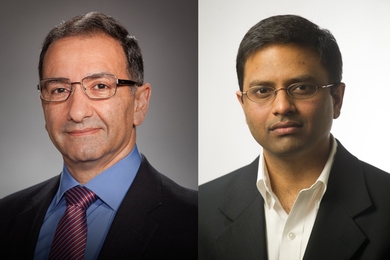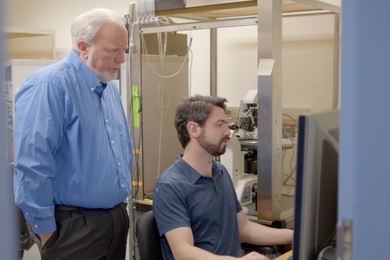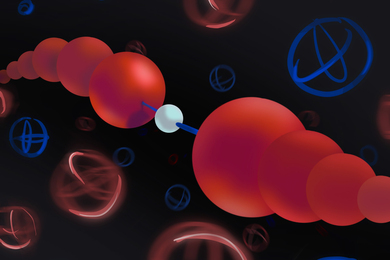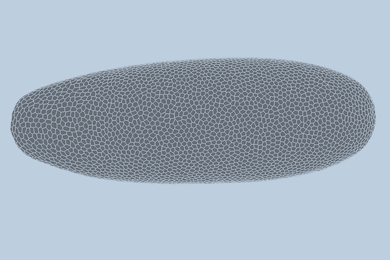Computer looks at `stream of motion'
With an eye toward developing tools for retrieval from large video archives, MIT scientists are teaching a computer to identify dance steps, such as the plie, from within a stream of motion.
There are two parts to the process being developed by Professor Aaron Bobick of the Media Lab and graduate student Lee Campbell. First, geometry extraction, the traditional focus of computer vision, is performed by a commercial system from Adaptive Optics Associates, Inc., that collects data about the position of the body in space.
Four infrared illumination cameras photograph a dancer who wears retro-reflective markers on her toes, ankles, knees, hips, shoulders, wrists and elbows. Three-dimensional trajectories of each marker generate a geometric model of the dance step. Next, the computer must understand the sequence of motions in a plie, for example, and it must recognize the beginning or end of a given step.
The dance step recognition system developed by Professor Bobick and Mr. Campbell locates the relative position of one part of the body with respect to another. The system then builds detectors for each step and labels the dance step appropriately. This recognition technique can be applied to a broad range of motions-hence its potential application in video retrieval.
The work is sponsored in part by Interval Research Corporation. (Source: Frames, a publication of the MIT Media Lab)
Modeling chemical reactions in an engine
The prospect of tightening regulations on vehicle emissions has prompted numerous engine tests to see how using different fuels changes the quantity and type of emitted hydrocarbons, key ingredients in the formation of smog.
MIT researchers led by Professor Simone Hochgreb of the Department of Mechanical Engineering are now taking a more fundamental approach to the problem. They are developing computer models that attempt to describe exactly how hydrocarbons in fuels break down chemically, change into different species, and (with luck) disappear inside a spark ignition engine. They have also developed a model describing processes inside the exhaust port, a chamber just outside the cylinder that serves as a passageway to the exhaust pipe. Predictions from the latter model correlate well with experimental measurements and suggest that chemical reactions taking place inside the exhaust port frequently produce new hydrocarbons that are longer-lived and more harmful to the environment than are the original hydrocarbons in the fuel.
The researchers are now tackling the more complex chemical reactions and mixing patterns that occur inside the cylinder. The work is sponsored by the Energy Laboratory's Consortium on Engine/Fuel Interactions and by the Coordinating Research Council. (Source: e-lab, a publication of the MIT Energy Laboratory)
A version of this article appeared in MIT Tech Talk on February 1, 1995.





